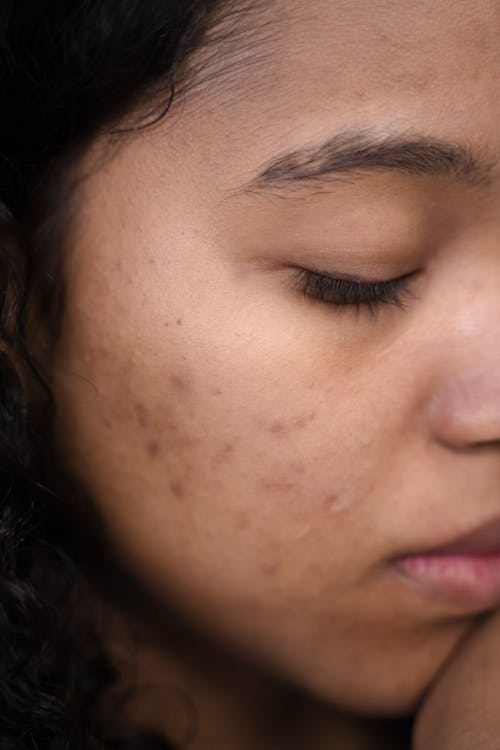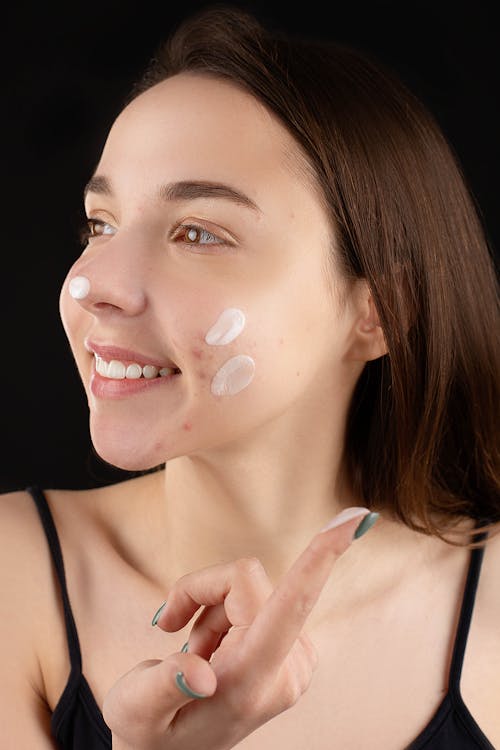Learn How To Fight Acne Scars, PIH And PIE

Just like any other tough goodbye, the break-up with acne often leaves us with physical reminders of its presence: PIH, PIE, and acne scars. However, much like how we seek solace in a supportive group during our emotional rollercoasters post-breakup – 100% PURE is here to help soothe such skin imperfections!
With its range of skincare products specifically formulated for those dealing with the consequences of having had troubled relationships with acne – you’ll never have to feel alone on this journey again.
This article will provide a detailed analysis of the problematic after-effects of acne, how to treat and prevent them in the future. Don’t forget that even though this is your final hurdle on your journey to clear skin, proper care must still be taken – just as much attention should be given now, as when you were actively tackling your acne before!
Let’s finally put this heartache behind us and move on.
AFTER HAVING ACNE
Not only do we have to face the agony caused by acne inflammation, but now we must also suffer through its appalling aftermath – discoloration and scarring.
Discoloration:
1. PIH (Post-inflammatory Hyperpigmentation)
Have you ever noticed dark spots where your acne used to be? This is Post-inflammatory Hyperpigmentation (PIH for short). When inflammation occurs, melanin is overly produced and deposited in the skin, giving it a dark or brown hue. PIH can linger long after blemishes have healed–but luckily there are treatments that can help diminish its appearance!
2. PIE (Post-inflammatory Erythema AKA Redness)
We’re all unfortunately familiar with the temptation to pick at our pimples, despite being warned numerous times not to. We then proceed to feel even worse when it leads us to Post-inflammatory Erythema (PIE), a reddish discoloration of the skin caused by ample blood vessel destruction in already inflamed areas.
Difference between PIH and PIE?
To begin treating these skin issues, let’s take the time to differentiate PIH and PIE in order for us to create a specialized plan of action for each one. Here is an easy-to-use exam that will help distinguish between them:
“The Pressure Test”: Gently apply a bit of pressure on the blotchy skin and take note if its hue changes. What you’ll see is known as “skin blanching,” where—through your fingertips’ pressure—the blood vessels constrict, causing the discoloration to vanish momentarily. But if no color alteration happens, it’s likely that what you have is PIH instead.
Scarring:
1. Atrophic Scarring
Atrophic scarring is a type of skin damage that appears as pitted or indented marks on the surface. Depending on their shape and extent, these scars can be further divided into various distinct types, which are depicted in pictures for better clarity.
2. Hypertrophic Scarring
This more substantial kind of scarring happens when an excessive amount of skin tissue grows over the non-affected region. It often appears to be higher than your normal skin layer.
Treatment After Having Acne
Initially, be cognizant of the fact that this journey will take time. Similarly, with acne, there is no secret product or skincare regimen to erase marks and discoloration immediately. Be patient with your skin – the results won’t come if you don’t wait for them!
Use sunscreen every single day! And that’s it!
A sunscreen is a vital tool in combating hyperpigmentation, as UV radiation has an immense impact on how pigment appears on our skin. This results in us being more susceptible to hyperpigmentation and prolongs the healing process even further. Fading this discoloration can take quite some time already, so let’s not make it harder than necessary! Shield yourself from ultraviolet rays by liberally applying sunscreen, avoiding midday sunlight exposure, and wearing protective clothing with anti-UV technologies.
For PIH:
- Exfoliate regularly
Elevate your skin’s cell turnover by utilizing 7% Fruit Acids Apple Enzyme Exfoliating Cleanser from 100% PURE, a gentle exfoliating product that eliminates dull and lifeless cells. Reinvigorate your complexion with this powerful yet delicate formula for a brighter, healthier glow!
- Use skincare products that help fade pigmentation.
Revitalize your skin and revive its natural glow with powerful skincare ingredients such as Vitamin C Serum, Niacinamide Boost, and Hydroquinone. These are all great at fading pigmentation for a brighter look! To top it off, using the Dark Spot Remover from 100& PURE can also help fade the appearance of any dark spots you may have for an even complexion that is simply radiant.
For PIE:
- Don’t be rude with your skin
Pamper your skin with gentle and calming items like the Rose Water Hydrating Milk, and steer clear of abrasive scrubs for optimal comfort.
PREVENTION
Keeping a healthy skin barrier
Your skin barrier is like your own personal bodyguard, and it’s essential to treat it well in order for it to do its job. After all, this protective layer ensures that the good stuff stays in – while obstructing bad bacteria from entering and causing inflammation or discoloration of the skin. Show a little TLC to your very special guardian, and you will see marked improvements in scarring too!
Don’t pop your pimples!
Poorly managed acne can have disastrous consequences: the deeper and longer your post-acne scars appear, the greater amount of inflammation that is present in your skin. Picking or popping pimples opens potential pathways for bad bacteria to enter, leading to an increased chance of infection and prolonged scarring. The more bacteria existing on our skin, the higher likelihood we will see these long-term effects from our breakouts.


